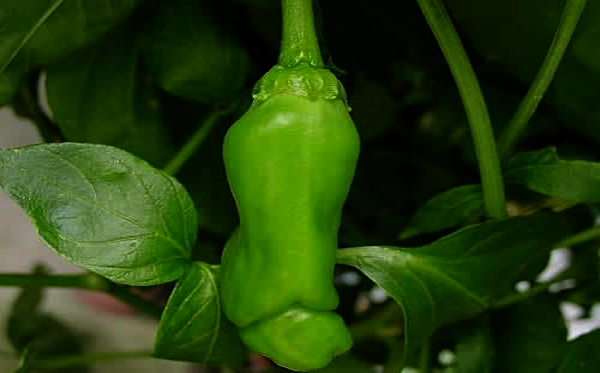New Delhi: The Indian Institute of Horticultural Research (IIHR) in Bengaluru has developed five new chilli hybrids, which it says are resistant to the devastating leaf curl virus (LCV) that afflicts the crop.
The hybrids will be made available to farmers for the kharif season later this year.
According to experts, who have developed these new varieties, the leaf curl virus, transmitted by the Whitefly, has emerged as a serious problem in the major chilli growing areas of Haryana, Punjab, Rajasthan, West Bengal, Uttar Pradesh, Madhya Pradesh, Maharashtra, Andhra Pradesh, Telangana, Karnataka and Tamil Nadu.
“Due to the virus and the leaf curl disease it causes, the plant shows severe retardation in growth and development such as curling, reduced leaf size, inhibited fruit and eventually abnormal fruit development leading to 100 per cent loss if the crop gets affected at an early stage,” said K. Madhavi Reddy, principal scientist at the institute’s division of vegetable crops and who led the team of scientists in developing hybrid chillies.
She added that the hybrids completely withstand the disease.
“The newly developed chilli hybrids are the best resistance against the virus,” she said. “Genetic resistance in host plants is an ideal line of defence against this virus, since it does not require the use of insecticides to control vectors and thus is beneficial for the environment and human health. To overcome chilli leaf curl disease, work was initiated at the department in 2014 itself.”
According to a study published in the Biomedical Journal of Scientific and Tech Research in 2018, leaf curl virus in chilli causes losses of about $15 billion per annum worldwide.
Hybrids to cost less than current chilli seeds
According to Reddy, the five hybrid chilli varieties — Arka Tejasvi, Arka Yashasvi, Arka Saanvi, Arka Tanvi and Arka Gagan — would reduce dependence on imported seeds, and save the country around Rs 170-200 crore.
As of now, chilli farmers in the country buy seeds from private companies for anywhere between Rs 45,000/kg to Rs 75,000/kg, depending on the demand for the crop.
IIHR has decided to price these new chilli hybrid seeds at between Rs 20,500-Rs 25,000/kg, based on the region and type they are to be cultivated in the parts of the country.
Chilli is a major commercial crop grown by farmers across India. According to first advance estimate of horticultural crops 2020-21, the green chilli acreage is estimated to increase to 3.91 lakh hectares in 2020-21 from 3.77 lakh hectares in 2018-19, with an increase in production from 37.83 lakh metric tonnes (LMT) to 40.65 LMT in the same period.
Dried chilli production, however, is estimated to drop from 19.31 LMT in 2019-20 to 19.14 LMT in 2020-21 despite an increase in acreage from 6.84 lakh hectares to 7.43 lakh hectares in the corresponding period.
Telangana leads in chilli production in India, accounting for over 32 per cent of the country’s total production. It is followed by Karnataka (25 per cent) and Madhya Pradesh (23 per cent).
The chilli hybrids
The institute has spent almost a decade in developing these new chilli variants, which will be further developed into commercial varieties according to requirements across different parts of the country.
For instance, according to Reddy, Andhra farmers who prefer highly pungent and less wrinkled chilli varieties will be handed those varieties, while chilli farmers in Maharashtra will be given the rich and gleaming crop they prefer.
Reddy said that to develop these new hybrids, IIHR collected several infected chilli leaf samples from Raichur, Karnataka, following which 250 genotypes were screened and the resistant ones identified.
Using resistant sources, 52 chilli hybrid combinations were developed and evaluated along with popular commercial breeds based on their consistent performance over three years. They eventually led to the five hybrid varieties.
Source: The Print
You may also like
-
New Heat-Based Approach To Cancer Treatment Can Reduce Chemotherapy Doses
-
Scientists Take A Major Step Towards Unification Of Classical & Quantum Gravity
-
India Graphene Engineering and Innovation Centre (IGEIC) Under the Vision of Viksit Bharat@2047 Launched
-
New High-Performance Gas Sensor can Monitor Low Level Nitrogen Oxides Pollution
-
Antidepressant Drug can be Repurposed for Treating Breast Cancer
